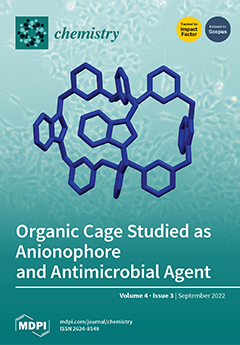In this study, we used the FP-LAPW technique based on density functional theory applied in WIEN2k code to examine the structural, electronic, elastic, and thermoelectric properties of cubic double perovskite Rb
2InBiX
6 (X = Cl, Br) compounds. The structural stability was
[...] Read more.
In this study, we used the FP-LAPW technique based on density functional theory applied in WIEN2k code to examine the structural, electronic, elastic, and thermoelectric properties of cubic double perovskite Rb
2InBiX
6 (X = Cl, Br) compounds. The structural stability was confirmed from the tolerance factor, formation energy, and phonon dispersion. The exchange-correlation potentials LDA, GGA, mBJ, and HSE were used to estimate the electronic properties. According to the band structure computed band gap using mBJ, the HSE are 1.61 eV, 1.81 eV for Rb
2InBiCl
6 and 1.22 eV, 1.32 eV for Rb
2InBiBr
6 compounds, respectively. The mechanical stability of the materials under examination were reflected by the calculated elastic constants. The estimated bulk modulus-to-shear modulus ratios for Rb
2InBiX
6 (X = Cl, Br) are 2.13 and 3.65, respectively. This indicates that the examined compounds were ductile in nature. The optical properties in terms of real and imaginary dielectric functions, refractive index, and absorption coefficient were computed, indicating that they might be employed in optoelectronic and photovoltaic applications. In the temperature range 200–800 K, the electrical conductivity, Seebeck coefficient, thermal conductivity, and power factor (PF) were analysed. Relatively high PFs of about 2.7 × 10
10 W/K
2 ms and 3.1 × 10
10 W/K
2 ms were obtained for Rb
2InBiX
6 (X = Cl, Br) suggesting that these compounds are viable for usage in thermoelectric devices. Both the compounds showed strong absorption patterns and excellent PF signifying that these are suitable materials for photovoltaic and thermoelectric applications.
Full article





